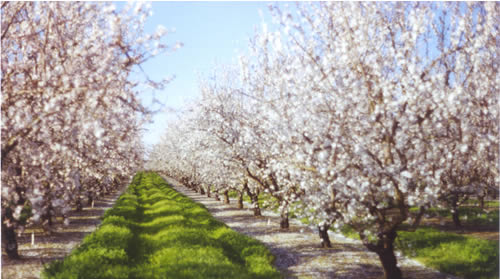

|
Yes, the big time
almond bloom is on! It happens the later part of February to the first
week or so in March after which the pedals start falling but the bees
remain in the orchards until released by the grower. Then everything about
moving bees (February) happens all over again in reverse. The bees are
heavier from the honey they have gathered in the orchards and hive populations
are greatly increased and growing which leads to swarming if left unchecked
(more on this in May). It's early spring in Idaho the last half of the
month as the bees roll in from California and we get ready for splitting
nucs and raising queens which is one of the busiest times of the bee year.
We'll get into that in April. |
|
BEE
STINGS |
|
Stinger magnified about 25 times. |
THE STINGER
|